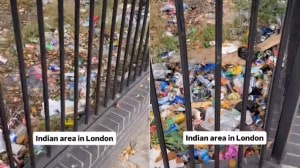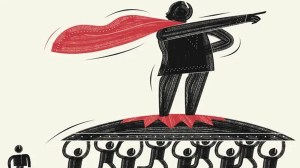Medium is the Mouse
If an artist sends a mail with a ‘worm’, talks about a ‘cyborg’ (a virtual being) or declares that he/she is a ‘hac...

If an artist sends a mail with a ‘worm’, talks about a ‘cyborg’ (a virtual being) or declares that he/she is a ‘hacktivist’ (a net activist), one knows one has entered the realm of Net art. A realm where cyberspeak is the catchphrase.
Log on and check it out. Ranging from online discussions to online exhibitions, awards, auctions and whole websites dedicated to the showcasing of a particular artist—this new medium has got many creative fingers clicking away.
‘‘The possibilities are endless,’’ says Mumbai’s Jaideep Mehrotra whose slick Apple computer, digital pen, digital sketchpad and handycam have opened a whole new world for him to play with. Mehrotra claims to be one of the first to dabble with ‘computer art’. ‘‘It was back in the ’80s and I think I was before my time,’’ he says.
Of course, oil on canvas still reigns supreme among ‘collectible’ art since very few have bought websites, and printouts don’t hold the same monetary value.
While some artists make cutting edge and subversive statements and form Net communities, others are happy to extend their creativity to a new medium. Still other artists fall prey to the allure of slick, easy-to-access images creating what, unfortunately, becomes vapid art.
Mumbai’s engineer-turned-artist Baiju Parthan, creator of the Cyborg, believes that virtual art is an indicator of the direction art will take in the future. ‘‘The experience of this art form is more engulfing, which is why I think it attracts both artists and audiences. The mediated experience multiplies sensory and interactive possibilities.’’ Intellectually though, it’s still aimed at the art literate, not the casual browser.
For Delhi’s Bharti Kher, illustration software Adobe Photoshop is just another tool. ‘‘It’s a nicer way to work since it makes images look more plausible or ‘real’. I guess that’s an irony since the work is virtual,’’ says Kher who has layered digital photographs, and her own oil paintings.
‘‘My concern with issues of gender and male-female polarities remain the same,’’ specifies the artist, who enjoys experimenting with different media.
|
Web designer-cum-artist Shilpa Gupta has been working on subversive websites for over three years now. Besides making political statements, (be it the illegal import of diamonds from Sierra Leone or shady online kidney sales), her work also critiques the Net itself. Her current ‘worm’ e-mails when clicked on, go to the artist’s self-designed website. Little red stick figures persuade the viewer to consider issues of caste and race while the person fills out forms demanding name, sex, country etc.
Gupta’s work, like many installations and online projects, is not ‘saleable’. So she usually depends on self-funding, grants and gallery support. Delhi’s only media gallery Apeejay has also played a key role in supporting projects of this nature since its launch in 2000. Pooja Sood, independent curator and art consultant who works with the gallery owned by Priti Paul, says, ‘‘Net art is not easy to ‘market’ and remains very nascent in India, which is why it helps that the Apeejay Group funds the gallery.’’
‘‘New media is spreading since technology is more accessible. A handycam now costs only
Rs 30,000 and there is software to edit on your computer,’’ says Sood. Which is why an artist like Mehrotra can sit in his studio and make an entire short film on his computer.
Delhi’s Vivian Sundaram believes, ‘‘Although digital is meant to be about cyberspace and the 21st century, it doesn’t have to be linear. I’ve used it to look back at old narratives and the notion of ‘truth’.’’ Sundaram has digitally manipulated archival photographs of the Shergil family taken by Umrao Singh Shergil, to create new meanings.
Currently working on an installation, new media project New, New Delhi—Room with Bed for an exhibition in Berlin, Sundaram plans to show the work at Mumbai’s Sakshi Art Gallery by 2004 as well. As Gupta puts it, ‘‘New media can hopefully alter the lopsided relation between the patron and the artist.’’



- 0114 hours ago
- 023 hours ago
- 0314 hours ago
- 0414 hours ago
- 0512 hours ago




























